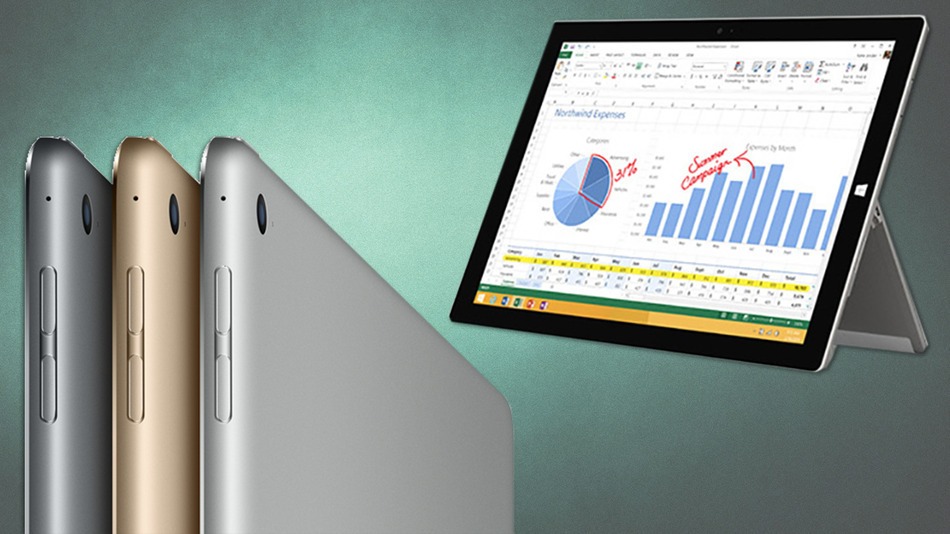With the iPad Pro, Apple has proven two important points
Since the last “Hey Siri” keynote event, we have learned a few more things about Apple, one of them being that the company is not afraid to blur the lines between Mac OS X and iOS, especially with products that directly compete with Microsoft. This time, however, Apple may have done something that inadvertently helped Microsoft gain traction, while validating two important truths about where the company is going, and what this means for Microsoft.

Market relevance for the Surface Pro tablet
Officially endorsing Microsoft Office 2016, and demonstrating its functionality on an iPad Pro, was a smart move under several aspects that may not be immediately apparent.
For one, Apple has brought awareness to the form factor of the Surface Pro, which will eventually trigger a mechanism by which customers will no longer see this form factor as a tablet, but rather as an actual PC, well capable to handle above and beyond productivity tasks, as well as a desktop PC. By this token, the market for Surface tablet-like devices has been officially given its blessing.
Desktop class performance on tablets is a reality
Recent benchmarks conducted on the iPhone 6S and 6S Plus have shown that this device is not only faster than any previous iPhone, it can also go toe-to-toe with a 1.3GHz MacBook, on both Single Core and Multi-Core tests.
These results may mean absolutely nothing when comparing two completely different classes of processors. There is an ocean separating Intel Core CPUs and Apple’s own A-class ARM chips. Also, it’s very unlikely that Apple will build a device capable of competing directly with its own products, which means that iPad Pro will never run on Mac OS X, no matter how fluid an experience it delivers, and no matter how fast it can run.
Having said that, releasing an iPad that is bigger than a 12 inch MacBook Retina, powered by the A9X chip, with specs capable of matching the 2015 MacBook, is a statement in itself. Apple needs to challenge the idea of the tablet as an accessory. With the iPad, Apple has proven that tablets can, and should be positioned outside of the realm of book readers and portable gaming devices, and into the realm of true productivity tools, designed for advanced tasks, such as video editing, design, and, of course, running MS Office 2016.